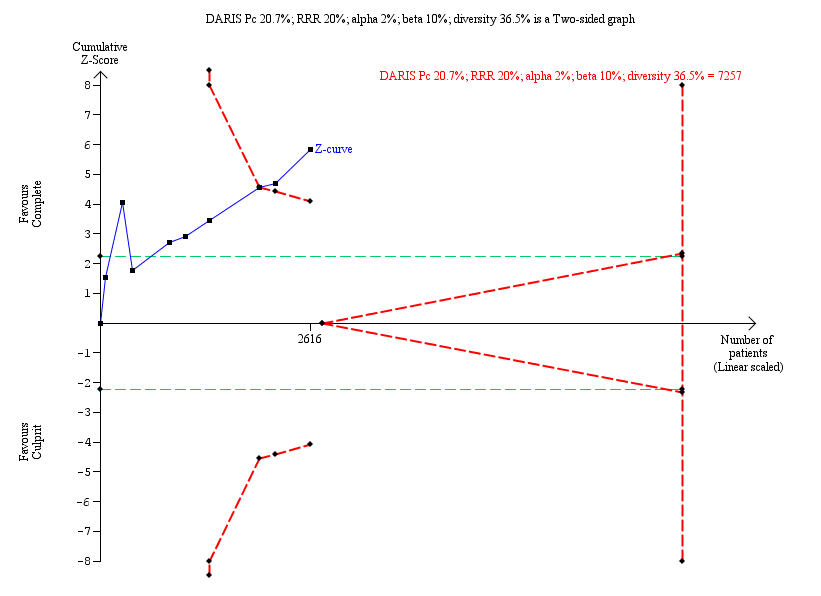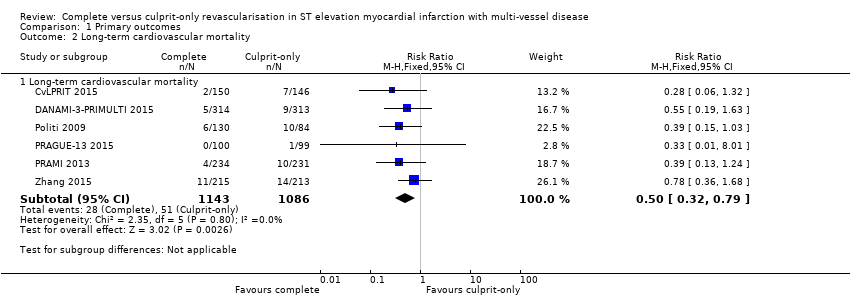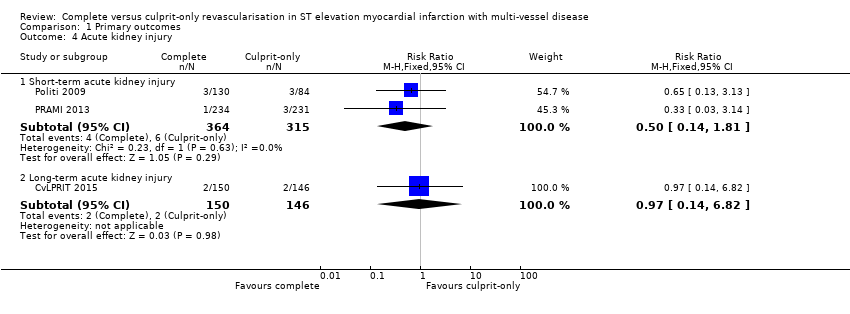Contenido relacionado
Revisiones y protocolos relacionados
Jonathon P Fanning, Jonathan Nyong, Ian A Scott, Constantine N Aroney, Darren L Walters | 26 mayo 2016
Qiang Su, Tun Swe Nyi, Lang Li | 18 mayo 2015
Carina Benstoem, Christian Stoppe, Oliver J Liakopoulos, Julia Ney, Dirk Hasenclever, Patrick Meybohm, Andreas Goetzenich | 5 mayo 2017
Deren Wang, Bian Liu, Wendan Tao, Zilong Hao, Ming Liu | 25 octubre 2015
Naqash J Sethi, Sanam Safi, Steven Kwasi Korang, Asbjørn Hróbjartsson, Maria Skoog, Christian Gluud, Janus C Jakobsen | 23 febrero 2021
Michael McCaul, Andrit Lourens, Tamara Kredo | 10 septiembre 2014
Ahmed A Kolkailah, Rabah S Alreshq, Ahmed M Muhammed, Mohamed E Zahran, Marwah Anas El‐Wegoud, Ashraf F Nabhan | 18 abril 2018
Xavier Bosch, Jaume Marrugat, Juan Sanchis | 8 noviembre 2013
Carlos A Andrade-Castellanos, Luis Enrique Colunga-Lozano, Netzahualpilli Delgado-Figueroa, Kirk Magee | 27 junio 2014
Lars G Hemkens, Hannah Ewald, Viktoria L Gloy, Armon Arpagaus, Kelechi K Olu, Mark Nidorf, Dominik Glinz, Alain J Nordmann, Matthias Briel | 27 enero 2016
Respuestas clínicas Cochrane
Jane Burch, Juliana Ester Martin | 15 enero 2018



















